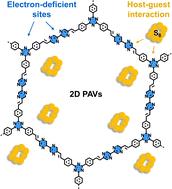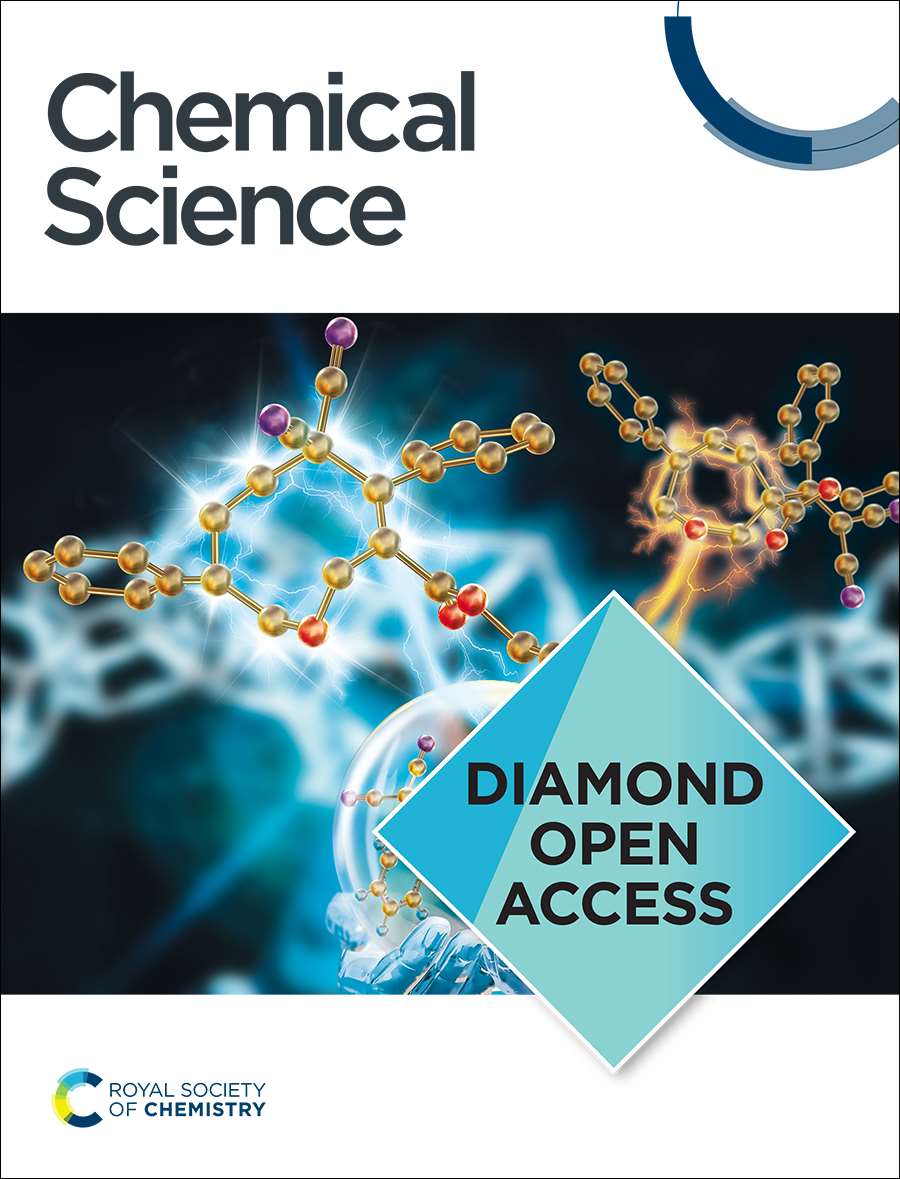Electron-deficient two-dimensional poly(arylene vinylene) covalent organic frameworks: efficient synthesis and host–guest interaction
IF 7.6
1区 化学
Q1 CHEMISTRY, MULTIDISCIPLINARY
引用次数: 0
Abstract
Crystalline and porous 2D poly(arylene vinylene)s (2D PAVs), i.e. vinylene-linked 2D conjugated covalent organic frameworks, represent promising materials for electronic and electrochemical applications. Chemically robust 2D PAVs with strong electron affinity are highly desirable for effective host–guest charge transfer to achieve enhanced device performance. Herein, we report the efficient synthesis and host–guest interaction of two novel 2D PAVs incorporating electron-deficient bipyrazine units with a N-free 2D PAV as a reference. They are crystalline and chemically robust. Various spectroscopies coupled with theoretical calculations indicate that the abundant N sites boost the electron affinity of 2D PAVs. We test their efficiency in hosting guest sulfur species and find that the electron-deficient materials help to physically confine and stabilize sulfur/polysulfide (e.g., Li2S6) molecules with facilitated intermolecular charge transfer in the porous channels. As a result, using sulfur encapsulated by 2D PAVs as electrode materials, we achieve high specific capacities with excellent capacity retention after 200 charge–discharge cycles for Li–sulfur batteries.

求助全文
约1分钟内获得全文
求助全文
来源期刊

Chemical Science
CHEMISTRY, MULTIDISCIPLINARY-
CiteScore
14.40
自引率
4.80%
发文量
1352
审稿时长
2.1 months
期刊介绍:
Chemical Science is a journal that encompasses various disciplines within the chemical sciences. Its scope includes publishing ground-breaking research with significant implications for its respective field, as well as appealing to a wider audience in related areas. To be considered for publication, articles must showcase innovative and original advances in their field of study and be presented in a manner that is understandable to scientists from diverse backgrounds. However, the journal generally does not publish highly specialized research.
 求助内容:
求助内容: 应助结果提醒方式:
应助结果提醒方式:


